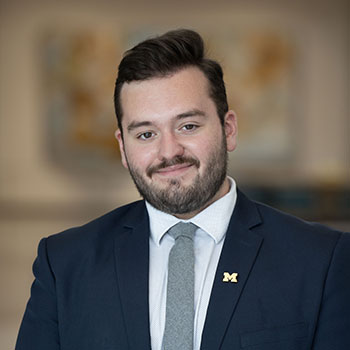
Restoration and collaboration
A field trip to the Boardman River presents a unique opportunity to see dam restoration and cross-disciplinary collaboration in action.

A field trip to the Boardman River presents a unique opportunity to see dam restoration and cross-disciplinary collaboration in action.
Amazing things are happening on the Boardman River.
From its head waters nearly 40 miles southeast of Traverse City in the northern Lower Peninsula, the Boardman River comprises 160 miles of river and tributary streams. Besides producing one-third of the water volume of Grand Traverse Bay, it is also an important trout habitat. And since the late 1800s, it has been home to several dams for hydro and mill power production.
When three of these dams were shut down in 2005, the dam owners – The City of Traverse City and Grand Traverse County – faced an interesting decision: whether to leave the dams there, or remove them. Ultimately, they decided that removing the dams was best for the community and the environment.

But removing dams is no easy task. In fact, the project on the Boardman River is more about “restoring function” than “removal,” with the ultimate goal of restoring 5.1 miles of cold-water stream channel and reconnecting over 170 miles of high quality river habitat to the Great Lakes over the course of around 15 years.
The project has obvious benefits for the local ecosystem, but it also had a surprising benefit 200 miles to the southeast, in a small class of 15 University of Michigan students in Ann Arbor.
The course “Restoration Fundamentals and Practice in Aquatic Systems” looks at restoration practices in rivers from both the ecological and engineering standpoints and attracts students in both Civil and Environmental Engineering and the Program in the Environment.
One student in the class, Dennis Sugrue, previously served as a commander for the Detroit office of the U.S. Army Corps of Engineers, supervising the Boardman River Restoration and other projects in the state. He suggested that the Boardman River would make a perfect field trip for this class, and Associate Professor Aline Cotel agreed.
“This is a once in a lifetime opportunity, with unmatched access to the project and technical staff,” said Cotel.
In October 2018, the class piled into rented vans and began the nearly four-hour drive north.
By far the largest dam removal project in Michigan’s history, the Boardman River Restoration project provided a unique opportunity for students to see stream restoration at different stages in a single day. The Brown Bridge Dam area (removed in 2012) continues to mature and the stream has settled; construction of stream restoration features has just finished on the Boardman Dam (removed in 2017); and the Sabin Dam (removed 2018) is still under de-construction, with the impoundment almost completely drained and the river nine inches from its pre-dam channel.

“We were able to visualize the entire process of a restoration project by visiting different sites, all part of the same river system, each in a different construction phase,” said Hannah Bashore, civil engineering student in the Sequential Undergraduate/Graduate Studies (SUGS) program.
At the Boardman site, the students even got to help with the project, planting trees that will stabilize the adjacent riverine slopes, offer cover and habitat, and provide shade to regulate water temperature in the summer.

Marketing Communications Specialist
Department of Civil and Environmental Engineering